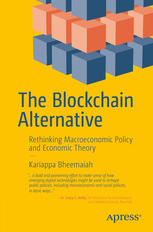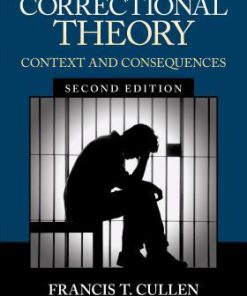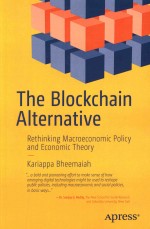Automation And Its Macroeconomic Consequences Theory Evidence And Social Impacts 1st edition by Klaus Prettner,David Bloom 9780128180280 0128180285
$50.00 Original price was: $50.00.$25.00Current price is: $25.00.
Automation And Its Macroeconomic Consequences Theory Evidence And Social Impacts 1st edition by Klaus Prettner,David Bloom – Ebook PDF Instant Download/Delivery:9780128180280,0128180285
Full download Automation And Its Macroeconomic Consequences Theory Evidence And Social Impacts 1st edition after payment

Product details:
ISBN 10:0128180285
ISBN 13:9780128180280
Author:laus Prettner,David Bloom
Automation and Its Macroeconomic Consequences reveals new ways to understand the economic characteristics of our increasing dependence on machines. Illuminating technical and social elements, it describes economic policies that could counteract negative income distribution consequences of automation without hampering the adoption of new technologies. Arguing that modern automation cannot be compared to the Industrial Revolution, it considers consequences of automation such as spatial patterns, urbanization, and regional concerns. In touching upon labor, growth, demographic, and policy, Automation and its Macroeconomic Consequences stands at the intersection of technology and economics, offering a comprehensive portrait illustrated by empirical observations and examples.
- Introduces formal growth models that include automation and the empirical specifications on which the data-driven results rely
- Focuses on formal modeling, empirical analysis and derivation of evidence-based policy conclusions
- Considers consequences of automation, such as spatial patterns, urbanization and regional concerns
Automation And Its Macroeconomic Consequences Theory Evidence And Social Impacts 1st Table of contents:
Chapter 1. Introduction
Abstract
1.1 Technological progress and its economic consequences
1.2 The economic consequences of automation: Could this time be different?
1.3 The social impacts of automation
1.4 The race against, or the race with, the machine?
1.5 Summary
References
Chapter 2. The stylized facts
Abstract
2.1 Adoption of automation technology
2.2 Dynamics of economic growth and welfare
2.3 Dynamics of the labor force and of unemployment
2.4 The evolution of inequality
2.5 Summary
References
Chapter 3. Empirical evidence on the economic effects of automation
Abstract
3.1 Occupations, jobs, and tasks susceptible to automation
3.2 Cross-country evidence on the economic consequences of automation
3.3 Summary
References
Chapter 4. A simple macroeconomic framework for analyzing automation
Abstract
4.1 Preliminaries and definitions
4.2 The simplest version of the standard 1956 Solow model in discrete time
4.3 The Solow model in continuous time with technological progress and with population growth
4.4 The Solow model with automation
4.5 Endogenization of the share of investment in traditional physical capital
4.6 Automation and wage inequality
4.7 The tradeoff between growth and inequality
4.8 Summary
References
Chapter 5. Endogenous savings and extensions of the baseline model
Abstract
5.1 Introduction
5.2 Cookbook procedures for static and dynamic optimization
5.3 Endogenous savings in the Ramsey–Cass–Koopmans model
5.4 Automation in the Ramsey–Cass–Koopmans model
5.5 Endogenous savings in the OLG model
5.6 Automation in the OLG model
5.7 Discussion of extensions
5.8 Summary
References
Chapter 6. Automation as a potential response to the challenges of demographic change
Abstract
6.1 Introduction and stylized facts
6.2 Demographic change and its economic consequences
6.3 How robots can help
6.4 Future employment projections based on automation
6.5 The reverse channel: could robots affect demography?
6.6 Summary
References
Chapter 7. Policy challenges
Abstract
7.1 The challenges
7.2 Education as a strategy to cope with the negative effects of automation
7.3 Labor market policies
7.4 Taxation in the age of automation
7.5 Social security in the age of automation
7.6 Demand-side policies
7.7 Summary
References
Chapter 8. Peering into the future: long-run economic and social consequences of automation; with an epilogue on COVID-19
Abstract
8.1 Joblessness, misery, and deaths of despair or “the happy leisure society”?
8.2 Spatial and regional implications: the future of cities
8.3 The question of how we care for each other
8.4 The meaning of being human
8.5 Epilogue on COVID-19
People also search for Automation And Its Macroeconomic Consequences Theory Evidence And Social Impacts 1st:
what is macroeconomic and microeconomic
effects of automation on the economy
quantitative macroeconomics
automation and income inequality
r automation
Tags:
laus Prettner,David Bloom,Consequences,Macroeconomic,Evidence
You may also like…
Business & Economics
Politics & Philosophy - Social Sciences
Fame attack the inflation of celebrity and its consequences 1st Edition Rojek
Cookbooks
Business & Economics
Politics & Philosophy - Social Sciences
History - World History
A world history of ancient political thought : its significance and consequences Black
Uncategorized
Environmental Issues of Deep Sea Mining Impacts Consequences and Policy Perspectives Rahul Sharma
Uncategorized











